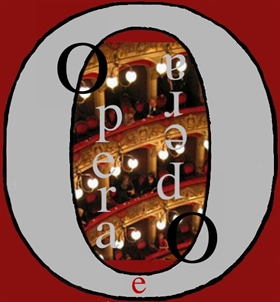Review: TOSCA at the Teatro Massimo in Palermo, with Fiorenza Cedolins and Marcello Giordani as protagonists.
By Natalia Di Bartolo © dibartolocritic
One sometimes thinks of witnessing live a well-known work such as Tosca by Giacomo Puccini, that if the same cast on stage today had appeared on stage twenty years ago, the effect would have been irrepressible.

Yet some singers of the golden generation of the 80s and 90s are still on stage and we still find them amazing today. Probably, in a subsequent generational change, the longevity of the voices will not be the same: different times, different teachers, different, perhaps, even the temper.
Tempra steel, always in play, therefore, in Palermo, for Fiorenza Cedolins and Marcello Giordani, respectively Tosca and Cavaradossi in production of the Teatro Massimo in Palermo, created by the Teatro del Maggio Musicale Fiorentino and staged on April 2, 2017.

Florence Cedolins he sang one of his must-haves on the scene and, objectively, his voice is no longer what it used to be. She has lost depth in the middle and high registers and her strings and pianos are difficult to govern. Yet it has flashes of greatness, as well as moments of yielding, such as the one in which, despite repeating it, in Vissi d'arte twice he failed to hit that famous, very difficult B flat on the word "Signor": he only touched it from below, better the second time than the first time.
Although lacking the scene of curtains to cling to, however, Cedolins, scenically still today is a figure of reference for this character, to whom however she has conferred, above all in the relationship with Scarpia, a touch of lasciviousness that Tosca does not possess; just as she has made her swooning, prone to grimaces, not a tragic heroine, even Grand Guignol, as she has always been brought to us, first by Sardou and then by Puccini. Points of view, probably accentuated by the direction of Mario Pontiggia, not always shared, but, obviously, indisputable stage presence.

As for Marcello Giordani, back from a good performance in Manon Lescaut in Catania, in Puccini's sovereign part he poured all his generosity as an interpreter into a voice that, here too, unfortunately, is affected by the wear and tear of time and the weariness of arduous trials that follow one another in short time. Encore also for him of "E lucevan le stelle", better done here too at the second performance. In this case, it was not only the unpredictability of the response of a no longer fresh voice, but also, probably, the emotion that still plays tricks even today on even the great performers, who are the first, being great, to realize take into account the limits of one's vocal means at risk and, therefore, to fear it. AND’ also for this reason that encores studied at the table should be avoided. Indisputable, even for him, the stage presence.
Full-bodied, just as full-bodied is the tonnage, less so in terms of volume, the voice of the baritone Sebastian Catana, Scarpia, which provided evidence of greater tonal freshness, despite not being particularly expressive scenically.
Pleasant the sexton Paolo Orecchia, likewise the’Angelotti by Romano Dal Zovo, corrected the other interpreters, well educated by Piero Monti the Choir, also that of children's voices, of the Teatro Massimo.

Last, but not least, la concertation and orchestra direction by Maestro Gianluca Martinenghi, who held the orchestra of the Palermo theater with a good hand, giving beautiful Puccini dynamics and beautiful colors, despite the fact that, in the pit, a few moments of uncertainty damaged the performance of the excellent Massimo orchestra.
The directed by Mario Pontiggia it was quite accurate, but, probably in order not to appear routine in a traditional staging, not only does it seem to have left the field free to the scenic virtuosity of Cedolins, but it made her move or remain still in moments unsuitable for the development of the story: in the previous scene Cavaradossi's "Vittoria" in the second act, a Tosca slumped to one side and not, instead, clinging to her lover "qual leopardo" as the libretto states, was at least unusual. Obviously, the scenic ensemble paid off in terms of dramatic tension, which definitely dropped in tone with unexpected ups and downs. A push and pull of emotion-relaxation, in short, which did not help the coherence of the show, however of a good overall level.
All in a staging, illuminated by Brown lights Ciulli, which in the first act appeared sumptuous, even more in the second, decreasing in tone in the third, in which the legacy of the polished floor of the sister ship La Traviata, departing on tour with Tosca for the Japan, made itself felt in all its unpleasantness. Except in La Traviata, also in Tosca, therefore, lo set designer Francesco Zito he fluctuated, decreasingly, between one act and another in the quality and style of the staging, instead carefully taking care of the costumes.
Great success with the public for a work of such great appeal, in a theater that is rightly experimenting with opening up to the public as well, both with the maxi screens in the square and with live streaming. Commendable initiatives.
Natalia Di Bartolo © dibartolocritic
PHOTOS: © Rosellina Garbo

